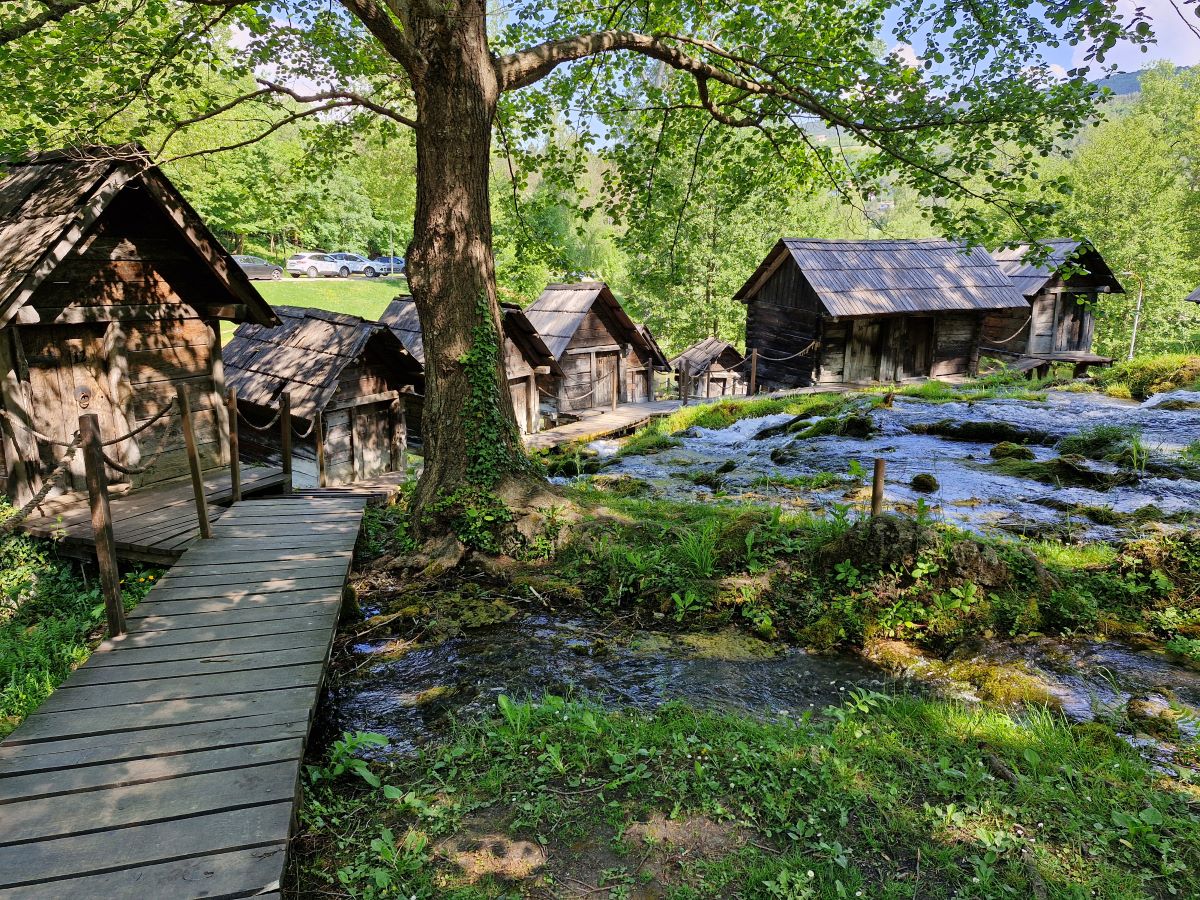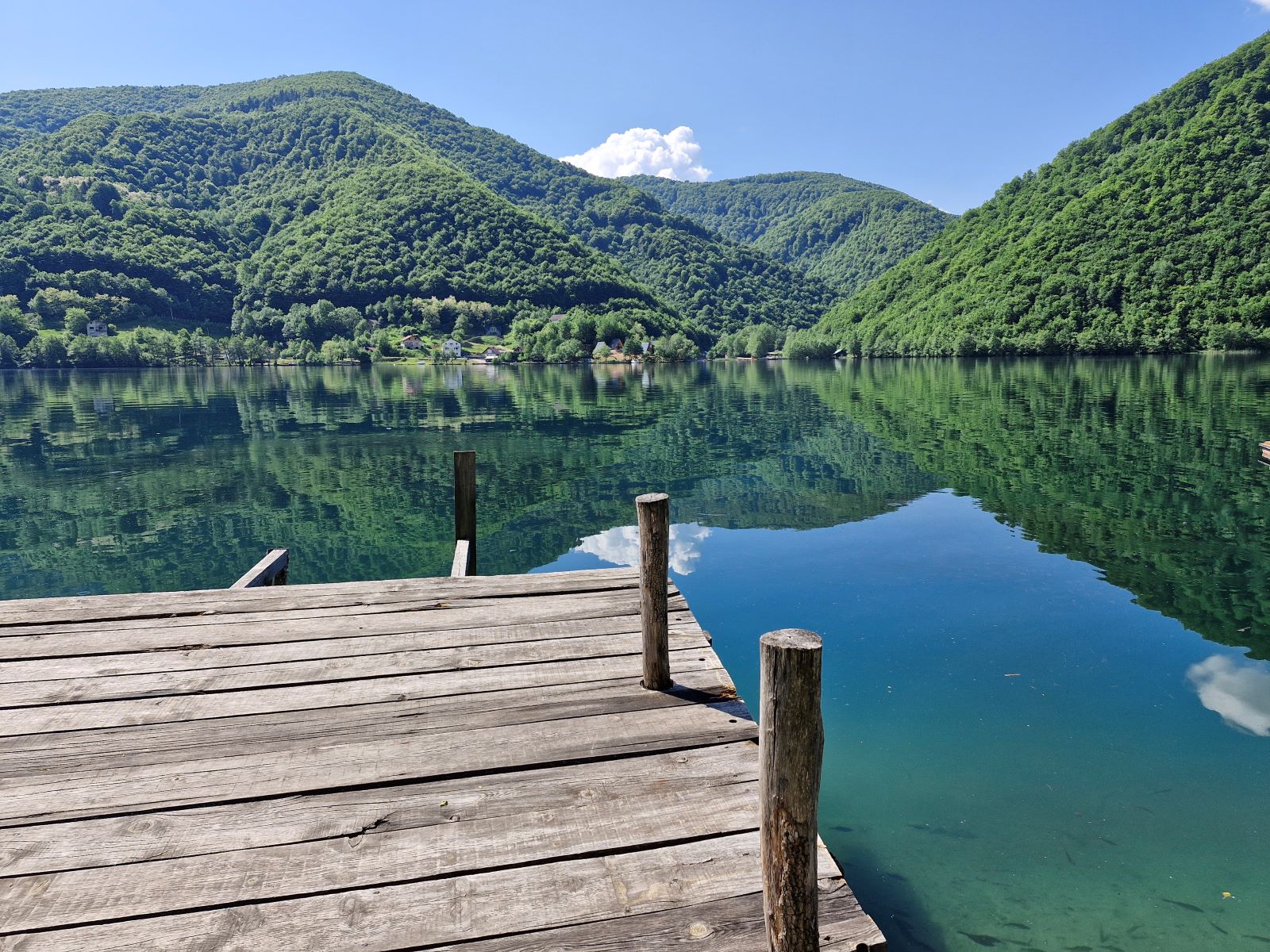Jajce
You are here: Home > Destinations > Bosnia & Herzegovina > Jajce
About Jajce
Jajce is often referred to as Bosnia’s “royal town”, reflecting its role as the former seat of the Bosnian kings. It was here that the last Bosnian ruler, Stjepan Tomašević, lived before his death in 1463, marking a pivotal moment in the country’s history. Founded by Hrvoje Vukčić Hrvatinić, Herzog of Split, Jajce developed into an important political and strategic centre, traces of which remain clearly visible today.
At the heart of the town is Jajce’s most striking natural feature: its waterfall, where the River Pliva plunges dramatically into the River Vrbas at their confluence. Unusually, this waterfall lies directly within the town itself, creating a powerful focal point that blends natural beauty with the surrounding historic setting. Rising above it is the impressive citadel, once among the strongest fortifications in the region. Built in several phases between the medieval and Ottoman periods, it withstood repeated sieges and today offers fine views across the town. Its gates, towers and walls illustrate a distinctive mix of western medieval and eastern architectural influences that characterise much of Bosnia & Herzegovina.
Jajce rewards visitors with a remarkable concentration of historical sites. These include the remains of a Roman Mithraic temple, rediscovered in the 20th century, and the AVNOJ Museum, commemorating the 1943 assembly that laid the foundations of modern Yugoslavia. The Bear Tower, one of the town’s oldest structures, hints at the town’s medieval past, while nearby you can also find the atmospheric catacombs, the Tower of St Luke and the Esma Sultana Mosque, all reflecting different layers of the town’s long and complex history.
Beyond the town itself, Jajce is surrounded by wooded hills, mountain meadows and clear freshwater springs. The surrounding landscape offers opportunities for gentle walking, hiking and outdoor exploration, with marked trails leading through forests and along rivers. Just upstream, the River Pliva broadens into the Small and Large Pliva Lakes, a short drive from the centre. These peaceful lakes are fringed with picnic spots and paths, and are particularly known for their traditional wooden watermills, built during the Ottoman period and still carefully preserved. The area is ideal for relaxed outdoor activities such as walking, cycling or simply enjoying the scenery, making Jajce a rewarding combination of history, nature and quiet charm.
Flexible Tailor-Made Holidays
- We believe passionately that no two holidays should be the same.
- With our flexible tailor-made holiday options you can travel at your own pace.
- Rediscover a city, a resort or an island in a weekend or longer.
- Take a small group tour or embark upon a more adventurous trip.
Trusted Service
- ATOL cover for flight inclusive holidays.
- One of us at Rediscover the World is very likely to have visited the hotels and travelled along the routes on your itinerary.
- Dynamic, comprehensive travel app with all your documents, maps and much more.
- Full financial protection for your holiday (TTA).
Why book Bosnia with us ?
-
More than 30 years experience of the region
-
Unrivalled expertise of local partner
-
Fly-drive holidays in Bosnia & neighbours
-
Activity holidays / Food-themed breaks
- Personally chosen hotels & guest houses
- Off the beaten track
-
24hr assistance in Bosnia & Herzegovina
 - waterfalls - MAIN.jpg)
 - fort-battlements.jpg)
 - falls at night.jpg)


 - town-tower.jpg)
 - panorama-w.jpg)
 - waterfalls - verycloseup.jpg)
 - waterfalls - aerial.jpg)
.jpg)

